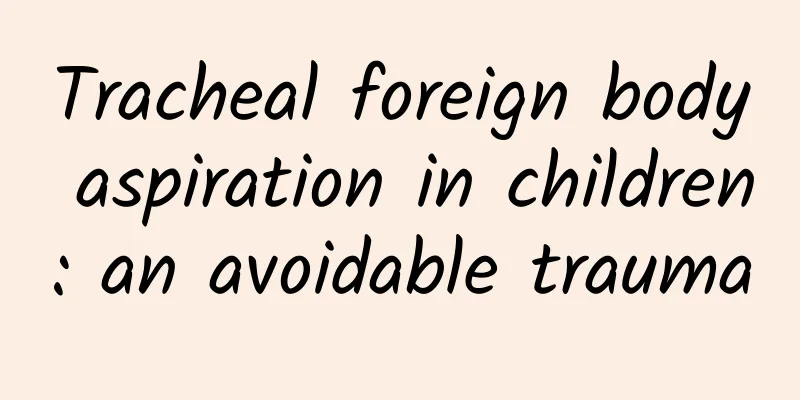Tracheal foreign body aspiration in children: an avoidable trauma

|
Age of onset of tracheal foreign bodies Tracheobronchial foreign body aspiration is a potentially life-threatening event because it can impair breathing by obstructing the airways and can even cause death if large airways are blocked. Approximately 80% of pediatric airway foreign body aspirations occur in children under 3 years of age, with a peak incidence between 1 and 2 years of age. Children this age enjoy putting small objects in their mouths, but they do not yet have the teeth to chew food adequately. Other reasons that foreign body aspiration may occur in this age group include exposure to inappropriate foods or small objects, movement while eating, and having older siblings who may put food or objects in the mouth of the younger child. Sources of tracheal foreign bodies Commonly aspirated foreign bodies in children include peanuts (36% to 55% of all foreign bodies in Western societies), other nuts, seeds (especially watermelon seeds in the Middle East), popcorn, food particles, hardware, and toy parts. Food is the most common aspirated foreign body in infants and young children, while nonfood objects (eg, coins, paper clips, pins, pen caps) are more common in older children. Factors that make foreign bodies more dangerous include round shape (round objects are most likely to cause complete airway obstruction and suffocation), resistance to breakage, compressibility, and smooth surfaces. Management of tracheal foreign bodies If foreign body aspiration is known or strongly suspected, take your child to the hospital immediately. Generally, a bronchoscope is required to identify and remove the foreign body. Some cases require thoracotomy due to special locations. If the diagnosis is made soon after foreign body aspiration occurs, damage to the airway or lung parenchyma is usually minimal. However, many children are not diagnosed until a chest X-ray is taken after coughing for a long time. The longer the foreign body is retained, the more likely it is to develop complications such as atelectasis, post-obstructive pneumonia, and even bronchiectasis. Notice to Parents Children should only be fed by adults and should be fed in an upright sitting position; Children should be taught to eat quietly, especially not to play, run, cry or laugh; Chewable medicines can only be given to children after 3 years of age (when molars appear); Do not allow children to put small objects in their mouths, such as small parts of toys, and follow the age recommendations on the toy packaging; Be aware of older children in the home who may give dangerous items to younger siblings. |
<<: How to administer cetirizine drops?
Recommend
Female lower abdomen pain sometimes no pain
Abdominal pain is a very common phenomenon. Many ...
Brain cancer is something that young people cannot avoid, and the elderly cannot prevent.
Frost’s Descent has just passed, which is also th...
Grayish brown discharge
When you are not having your period, there will b...
Drinking women's menstrual blood
For female friends, as long as they are not pregn...
Where is the hometown of navel oranges? When do navel oranges in southern Jiangxi ripen?
Navel oranges are bright orange-red, smooth and b...
Is the right ovarian cystic structure serious?
Women do not need to worry too much if they have ...
Last menstrual period after menopause
Compared with men, women's growth period is m...
Symptoms of lumbar disc herniation in women
Nowadays, many women suffer from sub-health condi...
Will girls still grow taller at the age of sixteen?
Will girls continue to grow taller at the age of ...
What causes constipation during ovulation?
I believe many people have heard of constipation....
What is the cause of foot peeling? Treatment methods and precautions for foot peeling
What is the reason for peeling feet? What should ...
What is the cause of blood in the vaginal discharge after menstruation?
Menstruation is the most important physiological ...
When does a woman's menstruation come?
Everyone knows that women have a very long-lastin...
Should I take Elevit during breastfeeding?
Nowadays, if they want to have a child, many fami...
What to eat to nourish Yin and nourish the nest
The ovaries are very important in women's liv...









